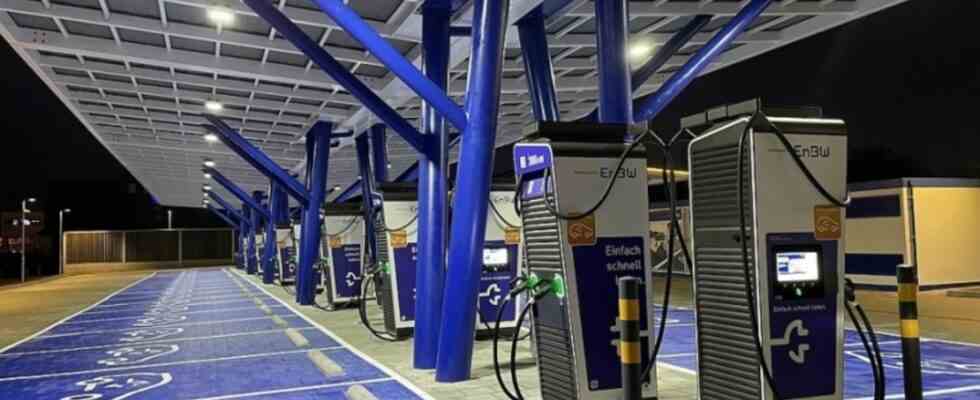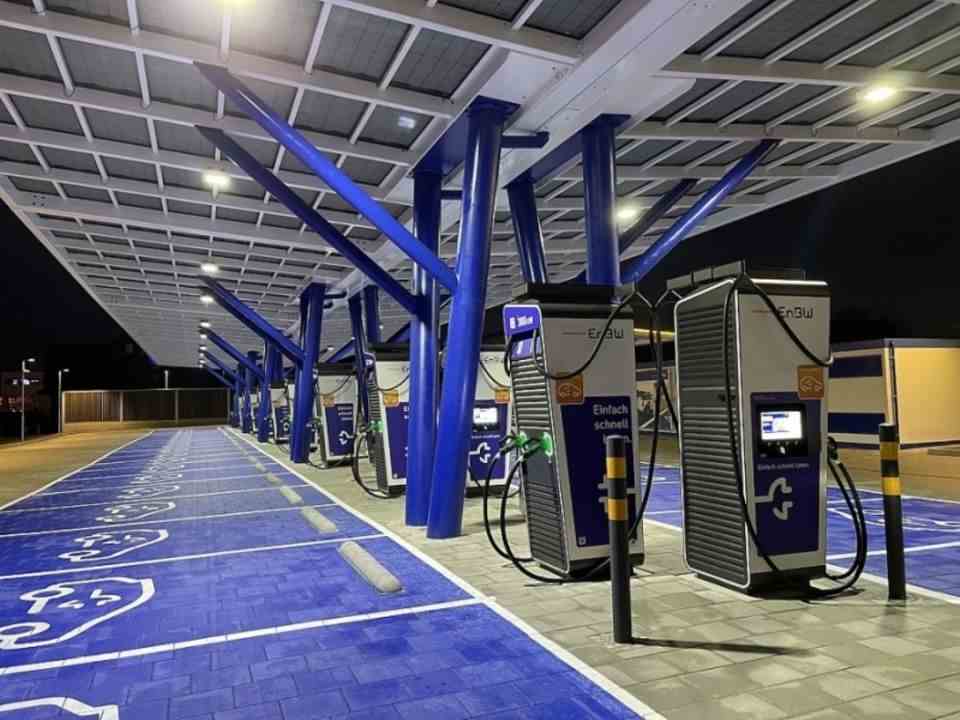Advice: source of income for electric drivers
How are the GHG premiums developing?
EnbW charging park
© press-inform – the press office
The drivers of an electric car, an e-scooter or the builders of a public charging point can be happy – they get money for the switch to electromobility. But where does the money come from and how will the premiums develop in the coming years?
As is well known, the premium for the greenhouse gas quota is applied for at one of the countless service providers who collect the applications and submit them to the Federal Ministry for the Environment. But the money that is currently being paid out after just under six to eight weeks does not come from the public sector, but indirectly from the mineral oil industry. According to a decision by the Bundestag in the summer of 2021, the GHG quota should be seven percent this year as an expression of the CO2 reduction. The GHG quota was introduced in order to involve the petroleum industry more in environmental protection than before. This has been happening indirectly for years by adding biofuels to petrol and diesel. The end customer has been benefiting since the beginning of 2022, because the driver of an electric car can take advantage of the fact that he is no longer driving a combustion engine, but driving an electric car or an electric two-wheeler.
How much money the driver gets per year is determined by the regulations of the federal government. The starting point for the classification is the year 2010. In this year, CO2 emissions must have fallen by seven percent compared to twelve years ago. By the end of the decade, the whole thing will be sportier, because by 2030, according to current specifications, CO2 emissions must have fallen by 25 percent. This will hardly work with the mixing of biofuels by the mineral oil companies and so the pressure to electrify vehicles is increasing. At the same time, the petrochemical industry can acquire the cleanliness certificates of the electric drivers every year and thus partially buy their way out. However, only pure electric vehicles benefit from the GHG premium, since plug-in hybrids may shine on paper with low CO2 emissions, but are not covered by the GHG premium. Therefore, the chances are currently good that the premiums will continue to be paid in the coming years and may even increase.
This GHG quota increases by a few percentage points every year. The GHG quota should be eight percent in the coming year. There are smaller jumps every year, so that the value increases to 10.5 percent in 2025 and increases to 25 percent by the turn of the decade in 2030. This means that the GHG premiums could increase significantly in the next few years – from the current 250 to 400 euros to possibly more than 1,000 euros reimbursement per year and vehicle if you register a corresponding electric car or e-scooter.
But not only the electric car flushes money into your own coffers. If you can then install a charging station at home and make it publicly accessible in some way, you get 15 to 35 cents per kilowatt hour for the electricity that you feed into your own charging station. In addition, the user can now also report how much electricity he has loaded into his own vehicle. To do this, this electricity must be introduced into CO2 trading via a third-party provider. In contrast to the past, this also works for drivers of a plug-in hybrid. These were not included until now, since only purely electrically powered vehicles could be registered for the direct GHG premiums.
First of all, the charging station must be a charging point that is accessible to everyone – at least temporarily. The charging station should therefore first be installed and then reported to the Federal Network Agency so that it can be included in the official register. This ensures that the column with its technical data such as access, charging plug and charging speed is also displayed in the numerous apps and navigation systems. The owner of the charging station can access his premium for the greenhouse gas quota just as easily as with his own electric vehicle. However, here it is not the registration certificate I with the vehicle data that is sent to the commissioned agency and the public authorities, but the operator of the charging point, the exact location and the official registration number EVSE-ID. Similar to your own car, you can also register your own charging station via various service providers. Either this service provider has complete access to the individual charging points via the network, or the owner of the charging station reports the consumption data once a month / quarter to the respective company, which then forwards this data to the responsible Federal Environment Agency. It currently takes two to three months from application to approval.


